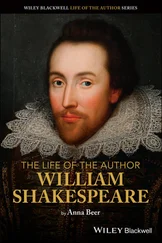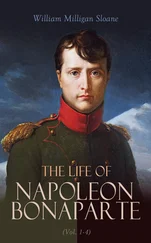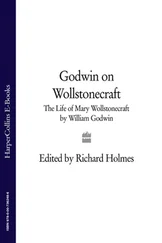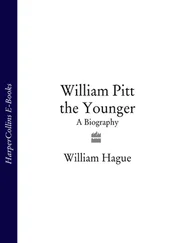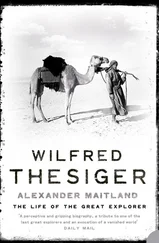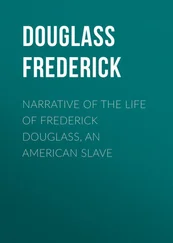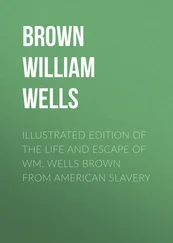The consolation was spending his vacations at Wimbledon, described by Jonathan Swift in 1713 as ‘much the finest place’ near London. He grew fond of his aunt and uncle, and settled in happily at their tranquil villa, Lauriston House. This would be an eight- or nine-bedroom house once its garrets were converted into bedrooms a few years later, with its own extensive grounds. Lauriston House was on the south side of Wimbledon Common, where the mansions were described in a guide book as ‘an assemblage of gentleman’s houses, most delightfully situated’, with ‘good gardens from whence is a pleasant prospect over the luxuriant vale beneath’. 20William must have felt at home here; years later this would be the place where he would entertain his closest friends, and what would in later life become an insatiable appetite for rural air may well have been fostered in the fields and woods around Wimbledon. Before long, the move to London had turned into a happy one after all. Despite the miseries of attending school, William had a new home he liked and a loving relationship with his relatives. And of far greater significance to his later beliefs, he was about to acquire something else; something which his mother had certainly not intended for him when she sent him away, but which would become another vital ingredient in the personality of the young William Wilberforce. That something was religion; and not merely religion, but religion with enthusiasm.
The Christianity which William had encountered with his immediate family in Hull had been of the classic Church of England variety: a necessary and formal requirement for active and respectable citizens, but not usually intrusive or demanding. His mother ‘always went to church prayers on Wednesdays and Fridays, but at this time had no true conception of the spiritual nature and aim of Christianity’. 21He would later write that ‘her piety was rather of that standard to which the Church of England had then so generally declined … She had a better opinion of the world than she should have had and was not aware of its wickedness.’ 22The approach of his uncle William and aunt Hannah was wholly different, for they were adherents of a relatively new movement which asked much more of its followers and challenged the complacency of the established Church. This was Methodism, a view of Christianity which John Wesley and George Whitefield were preaching energetically to vast and growing crowds. Their challenge to the Church was stark, and the controversy and passions they aroused were intense.
Methodism was one of a number of movements which had arisen early in the eighteenth century in reaction to the diluted nature of the Christianity preached by the Church of England and the hypocritical and lacklustre way in which it was practised. It had begun with a group of students clustered around John and Charles Wesley at Oxford in 1729. Rising early each morning to practise their devotions, and spending several evenings a week reading the New Testament to each other, they regarded religion seriously, and adopted a programme of charitable work, self-examination and fixed times for the study of the scriptures reinforced by mutual oversight. Variously described as ‘Methodists’, ‘Enthusiasts’, ‘Bible Moths’ or the ‘Holy Club’, their determination ‘to observe with strict formality the method of study and practice laid down in the statutes of the University’ 23was the crucial characteristic which allowed the term ‘Methodism’ to stick.
The desire of these men to reform the Church, reinforced by the preachings of Whitefield from the late 1730s, found a ready audience in England and in the American colonies. It is not surprising that many people were willing to hear the message that Christianity should be practised with a stronger sense of purpose, stricter rules and more pressing obligations. The abuse of ecclesiastical offices and the neglect of religious purpose in the Church of the eighteenth century had fully invited such a reaction, for it was mired in a period of place-seeking, money-grabbing and moral irrelevance. It was not just the Methodists who denounced the state of the Church. Jonathan Swift would make harsh and terrible claims about the deans and bishops he knew, while other observers spoke of the eighteenth-century Church as ‘one of the most corrupt in its administration’, or as ‘the biggest den of thieves in the whole world’. 24As Voltaire put it, ‘There is only just enough religion in England to distinguish Tories who have a little from Whigs who have none.’ 25
Many observers considered that Christianity was largely absent from much of the Church’s preaching. The renowned lawyer Sir William Blackstone did the rounds of the best preachers in London before declaring that ‘Not one of the sermons contained more Christianity than the writings of Cicero.’ 26The vicar Henry Venn considered, after listening to sermons in York, that ‘excepting a single phrase or two, they might be preached in a synagogue or mosque without offence’. 27It was common for apathetic clergy simply to buy sermons from each other, saving themselves the thought or effort required to come up with their own words. William’s Hull Grammar School teacher Joseph Milner would assert in the 1780s, ‘That sermons should be sold to them by a person advertising the newspapers, is a flaming proof of the low state of their religious views and studies.’ 28This was not surprising in an age when many of the clergy ceased to perform religious duties at all. Having been appointed to a lucrative parish, it was common practice for clergymen to become absentees, keeping the living obtained from the parish and delegating curates to carry out their duties at a much lower rate of pay. In 1771 the Reverend Dr John Trustler started a business ‘abridging the Sermons of eminent divines, and printing them in the form of manuscripts, so as not only to save clergymen the trouble of composing their discourses, but even of transcribing them’. 29One commentator wrote that ‘Country towns abound with curates who never see the parishes they serve but when they are absolutely forced to it by duty: that several parishes are often served by the same person, who, in order to double or treble his curacy, hurries through the service in a manner perfectly indecent; strides from the pulpit to his horse and gallops away as if pursuing a fox.’ 30Indeed, the hunting parson became the caricature of the eighteenth-century Church. One clergyman in Suffolk ‘kept an excellent hunter, rode well up to the hounds, drank very hard … he sang an excellent song, danced remarkably well, so that the young ladies considered no party complete without him’. 31Hard drinking was common, Wesley writing from St Ives in 1747 that two clergymen ‘were led home at one or two in the morning in such a condition as I care not to describe’. 32
Above all, it was the ruthless competition for the most lucrative parishes and dioceses that made the eighteenth-century Church a place of touting and toadying ambition, and caused understandable anger amongst a general population whose tithe payments funded the generous livings and evident abuses. There seemed no end to the number of positions a bishop might occupy: ‘The bishops are frequently archdeacons and deans, rectors, vicars and curates, besides holding professorships, Clerkships, prebends, precentorships, and other offices in cathedrals.’ 33One observer recorded that ‘the late Bishop of Salisbury is said to have died worth upwards of £150,000 … I can hardly think it probable that he could amass so much wealth … I never heard him accused of avarice: nor did I ever hear that he had any great fortune with any of his four wives.’ 34Nepotism only made matters worse. It was said of one family alone, the Beresfords, that one of them had cumulatively received over £350,000 from his Church living, another just under £300,000, a third £250,000 and a fourth, with four livings simultaneously, earned £58,000. In total, through eight clerics this family obtained £1.5 million from the Irish Church. Families with political connections were proud of their ability to obtain Church livings. The tombstone of one lady of the Stanhope family proudly declared: ‘She had the merit to obtain for her husband and children, twelve several appointments in Church and State.’ 35Lord Hugh Percy, Bishop of Carlisle, received over £250,000 from the Church, and ensured a steady supply of canonries, prebends and rectories for his sons and sons-in-law.
Читать дальше


